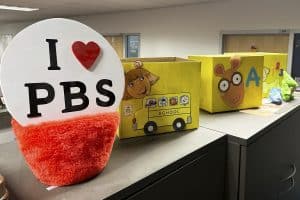“Even today’s young gay radicals … I don’t think they’re aware of how bad things were for gay people back say in the 1950’s and most of the 60’s,” proclaims gay activist and academic Martin E. Duberman, author of “Stonewall: The Definitive Story of the LGBTQ Rights Uprising that Changed America.” He recounts how gay people were vilified, taking on and internalizing society’s hatred, and believing themselves as sick and deserving of second-class citizen status.
Until 1950 most queer folk, which includes gay, bisexual, and gender fluid individuals, lived life either closeted to others or closeted to others and themselves. Then organizers founded the Mattachine Society and Daughters of Bilitis to counter internalized homophobia and to promote civil and political rights for gay men and lesbians. The mission was to encourage self-acceptance and embrace science to influence social integration.
During the 1960’s some activists’ expectations shifted to demand mainstream acceptance of LGBTQ+ people rather than the gay individual conforming in presentation to integrate socially. Duberman traces six activists’ lives from early years to the turbulent 1960’s, pre-Stonewall social justice work, the Stonewall riots, and societal impacts in the post Stonewall years.
The Stonewall Inn in Greenwich Village section of lower Manhattan was one of a handful of gay establishments during the 1960’s operated by organized crime. It was the only bar that allowed dancing and allowed drag queen customers. Gay bars only existed in New York City because the NYPD received payoffs from their Mafia owners. Although the owners despised gay people, they ran these profitable businesses because legitimate bars for gay clientele were then illegal. Liquor, of course, was boot leg since licenses were withheld from pubs that actively served the gay community. There was an unwritten agreement that the police would alert Mafia bar owners of impending periodic “raids” so these clubs could stash the liquor and advise those in drag who frequented the establishment to leave so they could avoid arrest. There was a municipal ordinance that patrons had to show ID if requested by law enforcement and they would be arrested if they did not wear at least 3 pieces of traditional gender conforming garments. The owners stayed in business by paying off the police precincts and the police staged performative raids just to put that in their required reports.
Then, on June 28, 1969, everything changed.
Law enforcement raided Stonewall … this time resulting in a riot which heralded neighborhood protests for a week. These events marked a culmination of that decade’s counter establishment demonstrations.
It’s unclear why that raid of the Stonewall turned into an uprising. Some speculate that this raid was FBI led rather than NYPD and the precinct contacts didn’t have enough time to warn the owners. So that might have set the stage for what happened next. Many patrons stayed rather than left. Quite a few drag queens were arrested as well as a masculine presenting lesbian. This group of customers began to resist, and the raucous resistance began to draw a large crowd outside the inn of un-arrested patrons and local onlookers in that Christopher Street neighborhood. Riots happened, lasting several hours that night. After things calmed down, the next night patrons and others in the gay community showed up in protest again much of it thanks to the reporting of the previous night’s riot and call to action by The Village Voice to protest gay oppression and police brutality.
Duberman interviewed Foster Gunnison, Craig Rodwell, Jim Fouratt, Karla Jay, Yvonne Flowers, and Sylvia (Ray) Rivera … all activists who hailed from diverse backgrounds in upbringing, privilege, wealth, race, class, gender, religion, and generation. Some had crossed paths with each other. Jim, Karla, Craig, and Yvonne had all been active in different aspects of 60’s counterculture protest movements prior to Stonewall, such as Anti-Vietnam War, Black Power, and Feminist movements. All witnessed the riots with varying degrees of closeness. All were (or are) gay and experienced those very first Pride marches in 1970.
Each of them had experienced blind spots with social change movements of the 1960’s, especially the reluctance of these groups to acknowledge the homophobia baked into the discourse. And even as these activists worked within pro-gay liberation organizations, they ran into gender, race, and class conflicts. Within gay rights organizations older activists pushed for incrementalism while younger ones wanted to upend the current established order. Gay activists were allies to other movements for peace, and racial and gender equality, but unfortunately these groups were not allying back to them.
It’s all part of the human tendency for individuals to see one problem/solution with the collective “elephant.” Each person, depending upon their context, sees a different part of that “elephant.”
Jim Fouratt embraced New Left politics while conservative Foster Gunnison just wanted freedom to live as a gay man. Sylvia (Ray) had rightfully bemoaned some in the gay community’s unwillingness to embrace drag queen and transgender voices and she strongly criticized callousness toward street youth sex workers. Karla was annoyed with the patriarchal attitude of gay men, and Yvonne found racist attitudes from her white lesbian sisters painful. Both women disliked the lesbian bar scene stereotype patrons as either “butch” or “femme”.
Gay acceptance work, social justice, and anti-war protests set the conditions for new post Stonewall gay rights movements to take up the mantle.
Soon after the riots, in 1969, the Gay Liberation Front and Gay Activist Alliance formed to confront society over oppression of queer folk. Rather than asking that society accept gays as had been Mattachine’s focus, the GLF and GAA DEMANDED that society accept diverse gay folk as full citizens entitled to all the rights of everyone else. On June 28,1970, the first annual Christopher Street Gay Liberation Day Parade in New York City and Christopher Street West Association Parade in LA commemorated Stonewall as did marches on June 27 in San Francisco and Chicago. Karla participated in the LA march, while the other 5 participated in the NY march. There are annual gay/trans Pride marches in many cities all over the U.S. and globally to this day. These marches then and continually empower more gay people to live openly and authentically.
All six trailblazers continued some form of activism whether in the gay rights movement legally, academically, or in other advocacy work. For instance, Craig Rodwell, owner of the Oscar Wilde bookstore, published works about gay issues and coined the phrase heterosexism as a framework for helping non gays understand the gay experience as a marginalized group. Jim Fouratt became a leader in several newer gay rights organizations such as ACT-UP to support those in the community stricken by AIDS and to demand better treatment, care, and anti-discrimination. Rivera, however, left the active movement in 1973 after experiencing silencing of trans voices within the LGBTQ community. She along with her friend Marsha P Johnson had been continuing support of trans street youth, working to keep them sheltered and safe.
Sadly, four out the six featured interviewees are no longer with us. Three all died within the next 2 years following the publication of Stonewall. And Sylvia Rivera passed in 2002. Jim Fouratt is involved in the arts and entertainment and Karla is a professor emerita at PACE university, where directed the gender and women’s studies program from 1974-2009. She is a published author and pioneer in gay and lesbian academia.
Duberman, our author, at 91, is still engaging in and grappling with larger society and where the LGBTQ+ community is today. Gay rights to be married and out in the military are two successes most of us can acknowledge as huge social change since the Stonewall riots. But Duberman later argues in his work “Has the Gay Movement Failed” that the erosion of labor rights over time has set back members of the LGBTQ+ community because they have been in higher numbers of working class than heterosexual individuals. And in the last few years there have been many statewide anti-gay and anti-trans bills introduced. So, erosion of rights must be paid attention to and halted for everyone especially for those in the queer community. Stonewall is well worth the time for anyone interested in gay liberation history. As someone who personally knows and loves LGBTQ+ people, I’m grateful to those elders, and many others, who decades ago did the hard work to uplift queer folk and their rights. May we keep passing that mantle, that baton, to other dedicated people even as rain falls during this relay marathon of justice.





